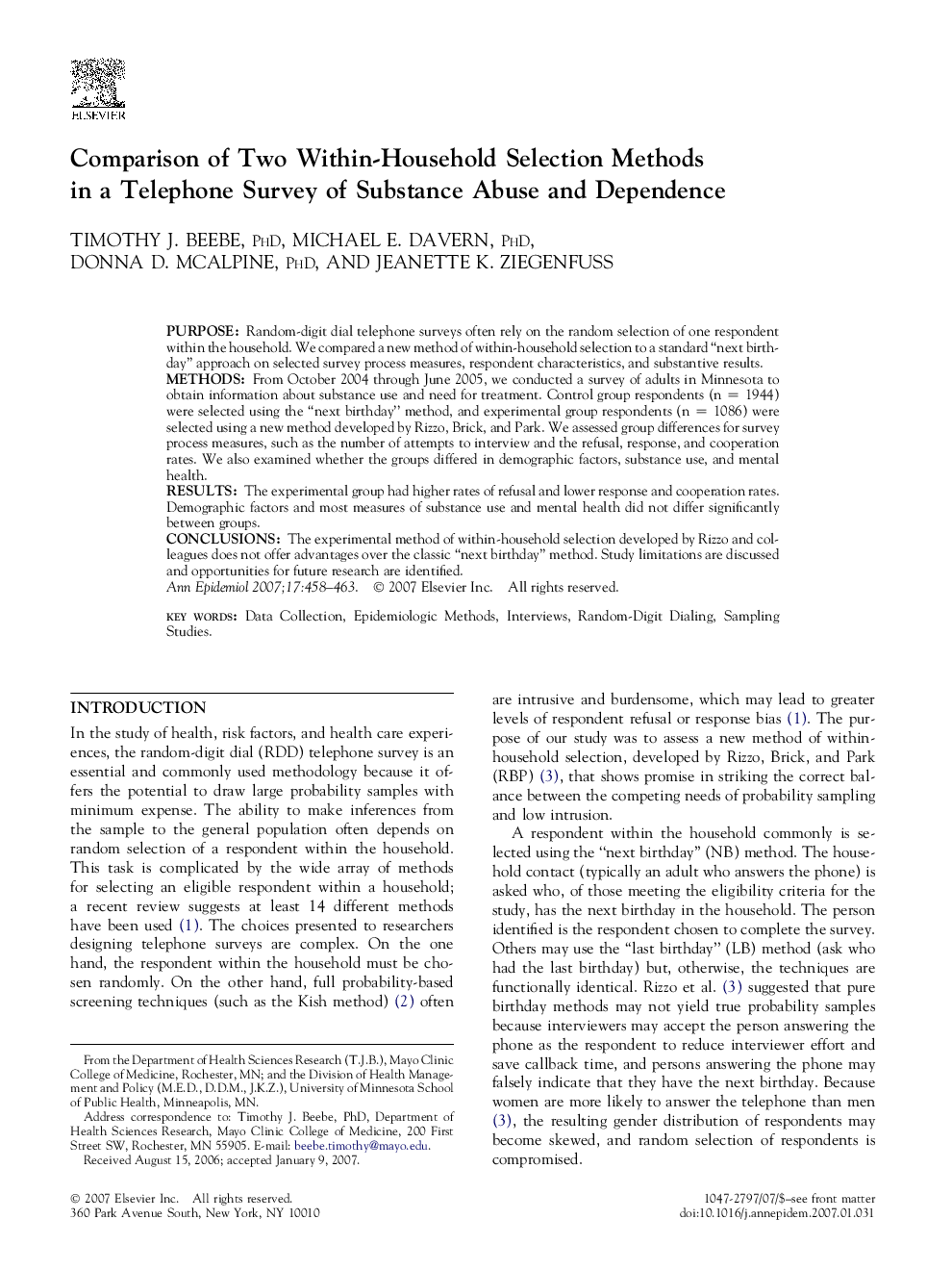| Article ID | Journal | Published Year | Pages | File Type |
|---|---|---|---|---|
| 3445799 | Annals of Epidemiology | 2007 | 6 Pages |
PurposeRandom-digit dial telephone surveys often rely on the random selection of one respondent within the household. We compared a new method of within-household selection to a standard “next birthday” approach on selected survey process measures, respondent characteristics, and substantive results.MethodsFrom October 2004 through June 2005, we conducted a survey of adults in Minnesota to obtain information about substance use and need for treatment. Control group respondents (n = 1944) were selected using the “next birthday” method, and experimental group respondents (n = 1086) were selected using a new method developed by Rizzo, Brick, and Park. We assessed group differences for survey process measures, such as the number of attempts to interview and the refusal, response, and cooperation rates. We also examined whether the groups differed in demographic factors, substance use, and mental health.ResultsThe experimental group had higher rates of refusal and lower response and cooperation rates. Demographic factors and most measures of substance use and mental health did not differ significantly between groups.ConclusionsThe experimental method of within-household selection developed by Rizzo and colleagues does not offer advantages over the classic “next birthday” method. Study limitations are discussed and opportunities for future research are identified.
